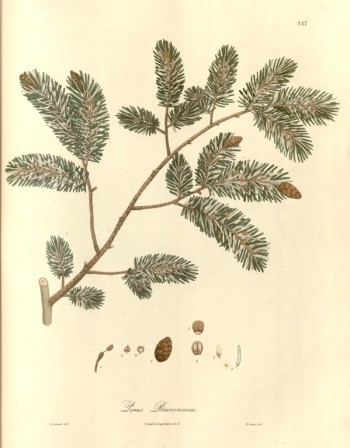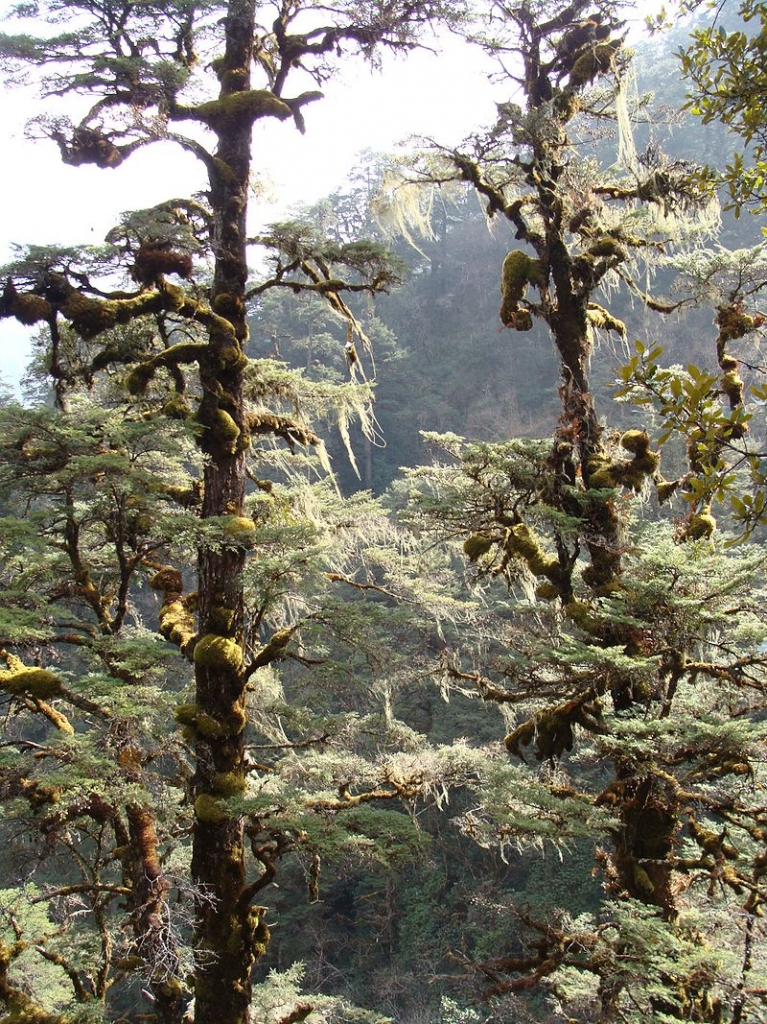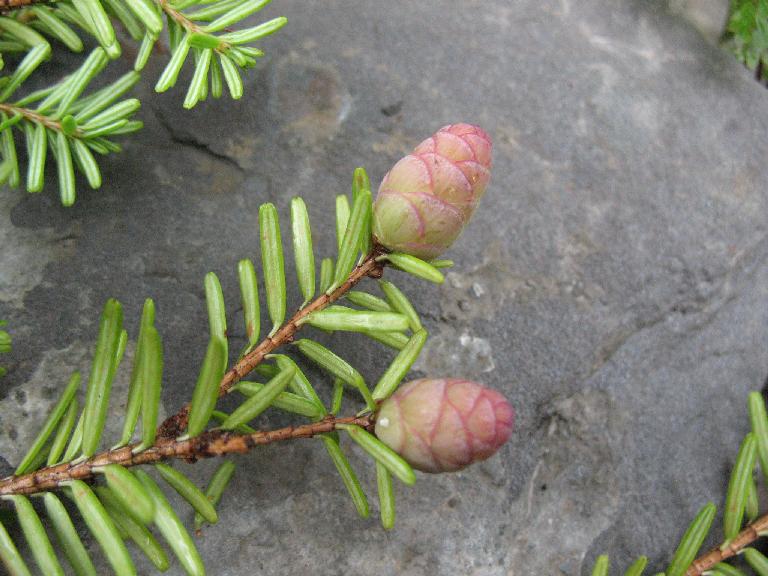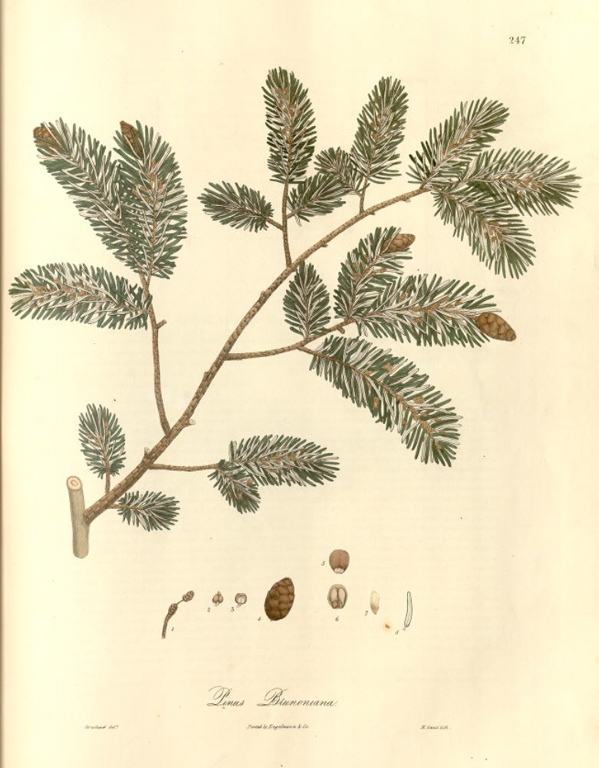Tsuga dumosa, as described in 1887 by (D. Don) August Wilhelm Eichler (1839-1887), in Die Natüsrlichen Pflanzenfamilien vol.2(1), no.80, is commonly known as Himalayan hemlock; as well as 云Š—é“æ‰ (Yúnnán tiÄ›shÄn) in the Chinese language.
Within its native range, the tree is used for construction as well as for furniture. In Europe and North America, it is occasionally encountered as an ornamental species and was first brought to the United Kingdom in 1838.
Description. Himalayan hemlock is an evergreen coniferous species of tree which will grow to mature heights of 65 to 80 feet (20 to 25 m) tall, exceptionally to 130 feet (40 m).
- trunk diameter at breast height is typically 16 to 20 inches (40 - 50 cm) wide, but can be beyond 40 inches (100 cm).
- crown on small trees is ovoid and their form is like that of pendulous bushes. Older trees tend to have multiple stems from one or two sinuous boles, especially in cultivation. The crown of mature trees is broad, irregular-pyramidal and open.
- bark is similar to that of an old larch (Larix sp.): somewhat pinkish to gray-brown and heavily ridged with broad, shallow, flaky fissures. The branching is oblique or horizontal.
- twigs are reddish brown or grayish yellow in their first year and are pubescent, i.e. covered with short hairs. Branches that are 2 to 3 years old are grayish brown or dark gray with leaf scars. The wood from the tree is a brownish yellow with a fine structure and straight veins.
- leaves are spirally arranged, pointing forward on the branches and placed distantly from one another compared to other species in the genus Tsuga. They are linear in shape, measuring 0.5 to 1 inch (10 - 25 mm) long by 0.08 to 0.1 inch (2 - 2.5 mm) wide. The needle ends are obtuse or rounded, and very occasionally emarginate. The upper surface of the leaves is green and shiny, while the undersides have 2 wide silvery stomatal bands. The upper half of the leaves usually have small dents on the margins, i.e. the margins are rarely entire. The midrib is concave on the upper surface.
- The pollen cones are globose in shape, solitarily arranged and axillary. The anthers are a green-yellow in color and lack an air sac.
- Seed cones are round-ovate in shape, also solitarily arranged, terminal and slightly down-curved. They have many spiral scales with 2 ovules contained within each scale. The seeds are about 0.36 inch (9 mm) long, ovate in shape, brown in color and have thin wings in their upper parts. Flowering occurs from April to May and cones maturing from October to November.
Distribution. This species is native to the Himalayan mountains - India from Uttar Pradesh to the Assam Himal (Arunachal Pradesh); northern Burma; Vietnam; southeastern Tibet; and China - northwestern Yunnan and into southwestern Sichuan provinces. In Vietnam it is only found on Hoang Lien Son mountain, at elevations greater than 5,000 feet (1,500 m) above sea level. It is usually associated species of Rhododendron and Abies pindrow, but sometimes forms pure stands.
Hardy to USDA Zone (10 to 20ºF / -6.7 to -12.2ºC) and has evolved to thrive in areas with a cold climate, high rainfall, clouds and high humidity.



